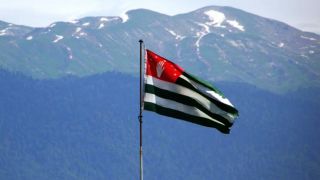Recently, we have heard lots of pro-Russian statements by Iranian officials. First, Secretary of the Supreme National Security Council of Iran Ali Shamkhani said that Iran might open its sky for Russian warplanes, and, later, Speaker of Iran’s Majlis Ali Larijani said that his country was moving towards a strategic alliance with Russia. And both meant contacts on Syria.
Shamkhani hurried to clarify that Iran would open its sky for Russian warplanes only if they joined its military operations in Syria. Russian pilots have already flown in Iran once: they took off Tu-22M3 and Su-34 from a Khamadan-based aerodrome.
As regards Larijani, before the talks in Astana, he said that Russia and Iran had no contradictions on Syria.
Nevertheless, the cooperation between Iran and Russia is not developing the way the sides would like it to develop. The Russians have not received the preferences they expected to receive from the Iranians after the lifting of the anti-Iranian sanctions. Most of the contracts have been given to the Europeans and the Americans. And this concerns civil aviation as well: the Iranians are supposed to get 80 Boeings and 100 Airbuses worth a total of $30bn, while Russia’s Sukhoi has managed to get an order for just 100 planes. And here too much depends on the Americans as some of the components of Sukhoi’s planes are made in the United States.
In tourism, things are no better. Here, the dynamics are cyclic with no progress observed: in 2013, 19,000 Russian tourists visited Iran, in 2015 8,500, in 2016 16,000.
In its turn, Iran cannot help being displeased with Russia’s activities in Syria. The Russians are improving their relations with the Turks, who support the Syrian Sunnis, who oppose not only the Damascus government but also the pro-Iranian Shia militia. The second fact that is annoying the Iranians is that the Russians are enhancing their influence in the Syrian army, while the Iranian forces are becoming less and less influential. For example, the moment the Syrian government and the Russian troops liberated Aleppo, the local Shia detachments were forced to withdraw.
One more concern for the Iranians is Russian-U.S. relations. Trump likes Putin and dislikes Iran. He has even compared the latter with ISIL. So, if Russia improves its relations with the United States, the Iranians may be left alone.
Some Russian politicians have given Iran a pretext for being worried. Quite recently, Russian Deputy Prime Minister Dmitry Rogozin cancelled his visit to Tehran just because the Iranians had made public some information about it.
But all this notwithstanding, Russia and Iran need each other. The Iranians need the Russians’ support in Yemen. They also their arms. The Russians have already supplied them with S-300 systems and now the Iranians are interested in Su-30 SM and the only obstacle here is the UN Security Council’s ban. The Russians, in their turn, need a reliable partner in the Middle East. Iran with its strong influence on Shias worldwide, on the governments of Syria and Iraq, the Yemeni Ansar and the Lebanese Hezbollah.
So, both sides are actively looking for common grounds. Fox News quotes the U.S. special services as saying that Commander of Al Quds Qasem Soleimani visited Moscow on Feb 14 and had meetings with his Russian colleagues. One of the topics was Russia’s relations with Saudi Arabia.
The UN has prohibited Soleimani from leaving Iran but he keeps visiting Moscow, Damascus and Baghdad. In fact, he is the key coordinator of Iran’s Middle East policy. So, his last visit to Moscow is expected to improve not only Russian-Iranian relations but also the general situation in the Middle East. But lots of things have changed since that visit: now that Trump is U.S. President, Iran may face new problems with the United States, while the Russians may hope for reconciliation with the Americans. But if the sides find common grounds, they may establish a strong alliance – the biggest and strongest in the Middle East.
Anton Yevstratov, specially for EADaily
 Maduro was handed over to the Americans by Vice President Delcy Rodriguez — Daily Mail
Maduro was handed over to the Americans by Vice President Delcy Rodriguez — Daily Mail The mayor of Dnepropetrovsk fell into hysterics: the Russians bombed American property!
The mayor of Dnepropetrovsk fell into hysterics: the Russians bombed American property! Low prices are unprofitable for ordinary people, they are beneficial for oligarchs — Tokayev
Low prices are unprofitable for ordinary people, they are beneficial for oligarchs — Tokayev Zelensky appointed a new head of the Special Operations Center "A" of the SBU
Zelensky appointed a new head of the Special Operations Center "A" of the SBU In Finland, they said that von der Leyen was building the Fourth Reich
In Finland, they said that von der Leyen was building the Fourth Reich Putin held a reception against a young judoka — Tokayev
Putin held a reception against a young judoka — Tokayev Zelensky: Ukraine is preparing for two scenarios
Zelensky: Ukraine is preparing for two scenarios